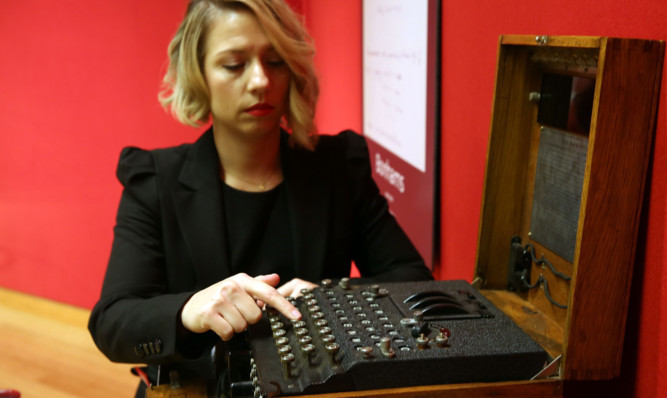In the back-street drinking dens of Istanbul and in the finest Swiss restaurants spies from all nations sought an advantage that would turn the course of the Second World War.
Members of MI5, MI6, the precursor of the CIA and the German Abwehr drank and ate in the same bars, clubs and restaurants hoping to benefit from loose talk and passing information and selling lies.
All the while however, at Bletchley Park, home to Britain’s Government Code and Cipher School, the Allies already had the means to bring the conflict to a premature end.
The Enigma machine had been developed by the Germans to encode radio messages and Hitler’s intelligence services were convinced it could not be broken.
It was used for even the most secret communications and all the while some of Britain’s brightest minds were listening in.
One of those famous machines will be brought to Dundee later this month to be the centrepiece of a talk by Dr Mark Baldwin an expert on Enigma machines and wartime code-breaking work.
The machines were portable, easy to use and could be set up in a myriad of different ways, meaning it was almost impossible for a human to crack the code.
That changed when the mathematician Alan Turing, whose work was brought to life in the film The Imitation Game starring Benedict Cumberbatch, built a machine that was able to do just that.
Dr Baldwin will explain how the Enigma machines worked during his talk, which takes place at Abertay University on Wednesday September 30, at 6pm.
Dr Natalie Coull, lecturer in ethical hacking at Abertay University, believes there is a clear the link with the code-breakers of the past and the ethical hackers of today.
“Anyone who has seen The Imitation Game will be familiar with the Enigma machines and their role in encrypting messages, but it is something else to see one in real life,” she said.
“During the Second World War, the UK Government employed a great number of scientists and mathematicians at Bletchley Park who specialised in code-breaking to try and crack the encrypted messages that the Enigma machines generated.
“These experts created a computer programme that was able to decode most of the Germans’ communications and helped save potentially millions of lives.”
Britain gained invaluable information on battlefield communications, air raids and ship and U-boat movements.
The free event is open to the public and places should be booked in advance at www.events.bcs.org.
